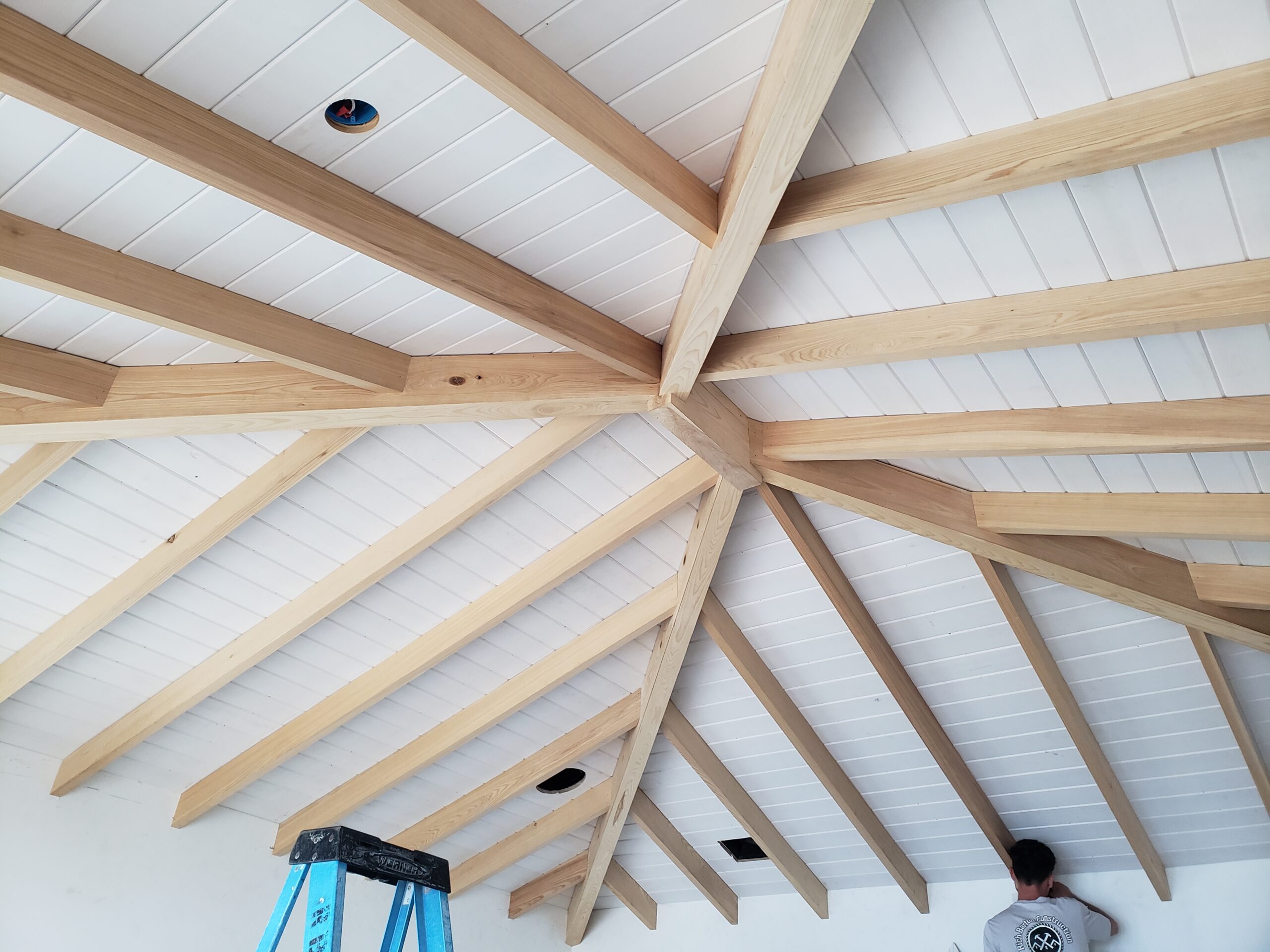When it comes to enhancing the aesthetic appeal of your home, ceilings often play a crucial role. One popular and charming option for homeowners is the tongue and groove ceiling. This classic design choice not only adds a touch of elegance to any room but also provides practical benefits such as improved insulation and soundproofing. If you’re considering a tongue and groove ceiling for your home but aren’t sure where to start, you’ve come to the right place. In this comprehensive guide, we’ll walk you through everything you need to know about tongue and groove ceilings.
What is a Tongue and Groove Ceiling?
Before diving into the details of installation and maintenance, let’s first understand what exactly a tongue and groove ceiling is. Essentially, a tongue and groove ceiling features planks that are fitted together using a system of interlocking edges. The “tongue” of one plank fits into the “groove” of another, creating a seamless and elegant look. This method not only ensures a tight and secure fit but also conceals the nails or screws used to fasten the planks, resulting in a smooth and visually appealing surface.
Advantages of Tongue and Groove Ceilings
Tongue and groove ceilings offer a range of benefits that make them a popular choice among homeowners. Some of the key advantages include:
1. Timeless Charm
One of the main reasons homeowners opt for tongue and groove ceilings is the timeless and classic look they provide. Whether you have a modern or traditional home, a tongue and groove ceiling can complement a variety of interior styles and add a touch of warmth and character to any room.
2. Enhanced Insulation
In addition to their aesthetic appeal, tongue and groove ceilings also offer practical benefits such as enhanced insulation. The interlocking design of the planks creates a tight seal that helps prevent heat loss, potentially leading to energy savings on heating and cooling costs.
3. Soundproofing Properties
If you’re looking to reduce noise transfer between rooms or from the outside, a tongue and groove ceiling can help improve the acoustics of your space. The solid wood planks absorb sound and minimize reverberation, creating a quieter and more peaceful environment.
4. Easy Installation
While installing a tongue and groove ceiling may seem like a daunting task, many homeowners find it relatively straightforward, especially if they have some DIY experience. For those interested in advanced techniques and safety, this can be an engaging project. With the right tools and materials, you can transform your ceiling into a focal point of your home in no time.
Choosing the Right Materials
When it comes to selecting materials for your tongue and groove ceiling, you have several options to choose from. Each type of wood offers its unique characteristics in terms of color, grain pattern, and durability. Some popular choices for tongue and groove ceilings include:
1. Pine
Pine is a budget-friendly option that is readily available and easy to work with. Its light color and natural knots give it a rustic charm that works well in casual and relaxed settings.
2. Cedar
Cedar is known for its natural resistance to insects and decay, making it an excellent choice for humid environments such as bathrooms or outdoor spaces. It also has a distinct aroma that adds a pleasant fragrance to your home.
3. Cypress
Cypress is a durable and rot-resistant wood that is well-suited for both indoor and outdoor use. It has a rich color and straight grain pattern that can add a touch of sophistication to any room.
4. Redwood
Redwood is a premium choice for tongue and groove ceilings, thanks to its beautiful reddish-brown hue and natural resistance to decay and insects. While it comes at a higher price point, the stunning aesthetics and long-lasting quality make it a worthwhile investment.
Installation Process
Now that you’ve chosen the right materials for your tongue and groove ceiling, it’s time to tackle the installation process. While the specifics may vary depending on your ceiling’s size and layout, the general steps are as follows:
- Prepare the Ceiling: Ensure the surface of your ceiling is clean, dry, and free of any obstructions. If necessary, remove the existing ceiling material and make any repairs to the underlying structure.
- Measure and Cut the Planks: Measure the dimensions of your ceiling and use a saw to cut the tongue and groove planks to the appropriate length. Remember to account for any obstructions such as light fixtures or vents.
- Start Installing: Begin at one corner of the room and work your way across the ceiling, slotting each plank into place using the tongue and groove system. Use a nail gun or screws to secure the planks to the ceiling joists.
- Fill in Gaps: If necessary, use wood filler to fill in any gaps between the planks for a seamless finish. Sand down any rough edges or surfaces to ensure a smooth and uniform appearance.
- Finish the Ceiling: Once all the planks are installed, apply a coat of sealant or stain to protect the wood and enhance its natural beauty. Consider adding crown molding or trim to complete the look and conceal any visible edges.
Maintenance Tips
To ensure your tongue and groove ceiling stays looking its best for years to come, follow these maintenance tips:
- Regularly dust or vacuum the ceiling to prevent the buildup of dirt and debris.
- Check for any signs of moisture or water damage, especially in areas prone to leaks or condensation.
- Periodically inspect the finish of the ceiling and reapply sealant or stain as needed to protect the wood from wear and tear.
The Bottom Line
In conclusion, a tongue and groove ceiling can be a beautiful and practical addition to your home, providing a timeless charm and a range of benefits that enhance your living space. By choosing the right materials, following proper installation techniques, and implementing regular maintenance, you can enjoy the elegance and warmth of a tongue and groove ceiling for years to come. Whether you’re looking to upgrade a single room or renovate your entire home, consider the enduring appeal of a tongue and groove ceiling in transforming your space into a cozy and inviting sanctuary.



